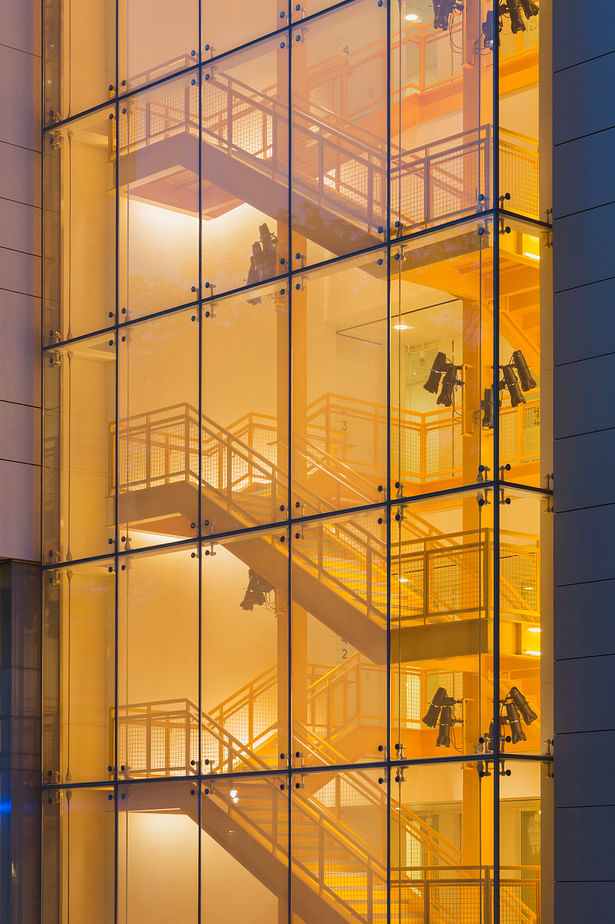
New Haven, CT | New York, NY | Shanghai, CN
The Theatre School is one of the top professional theater training programs in the country, located at DePaul University in Chicago. Pelli Clarke Pelli Architects’ design serves as the University’s gateway. The new LEED Gold building, opened in 2013, fits respectfully within the neighborhood and complements the existing architecture.
PCPA collaborated closely with DePaul University and The Theatre School stakeholders to design a building that incorporates two critical requirements: 1) to create an urban structure that welcomes the public to observe students in their learning environment, and 2) to develop a teaching and performance program that supports best practice opportunities for students, faculty and theater goers.
To energize the city block, PCPA placed the 100-seat flexible theatre on the fourth floor with a glass curtain wall facing Fullerton Avenue. Different color lighting illuminates the exterior and directs attention to the new building. Its location on the top also enables the public, on their way to the theatre, to glimpse students in action in their classrooms and rehearsal spaces, which encourages the urban community to learn about the school’s programs.
The five-story building is a composition of rectangular forms clad in limestone, translucent glass and transparent glass. It includes two green roofs, two theatres, four large scenery fabrication shops visible from the street, rehearsal and movement rooms, lecture halls, classrooms, administrative and faculty offices, as well as a costume shop, sound studio, and script library. Wide corridors and open lounges encourage conversation and collaboration; an interior courtyard on the fifth floor fills the spaces with natural light.
Innovative design solutions include transforming the main lobby into a lively “living room” space with floor-to-ceiling glass walls, framing the activity for the pedestrians and students on Racine Avenue to view. The space invites informal gathering of theatre goers and students before and after a performance in the 250-seat thrust theatre and allows for chance encounters with actors and crew. Because inspiration for a performance can happen anywhere, the lobby is able to function as a flexible performance space and spectators may watch from the balcony.
Status: Built
Location: Chicago, IL, US
Firm Role: Design Architect
Additional Credits: Senior Principal: Cesar Pelli, FAIA and Fred Clarke, FAIA
Principal in Charge: Mitchell Hirsch, AIA, LEED AP
Design Team: Gina Narracci, AIA, Associate Principal, Katy Harp, Associate
Associate Architect: OWP/P | Cannon Design
Structural Engineer: Thornton Tomasetti
MEP Engineer: WMA Consulting Engineers Ltd.
Civil Engineer: Civiltech Engineering Inc
AV/Acoustics: Kirkegaard Associates
Lighting Designer: Cline Bettridge Bernstein Lighting Design, Inc
Landscape Designer: Hitchcock Design Group
Cost Estimator: Daedalus Projects Incorporated
Theater Consultant: Schuler Shook, Theatre Planners
